A gate review is a valuable way to keep track of each phase or stage of a project. It allows independent reviewers to assess the work already completed and evaluate the project’s subsequent steps. In short, it’s an essential part of project governance.
In this guide, we’ll explain what a gate review is and why they are so important. Then we’ll discuss who, when, and how you should conduct a gate review – we’ll even show you how to include a gate review in one of our customizable project templates.
What is a gate review?
A gate review is a checkpoint that governs whether the project can proceed or not. As a formal governance step, it confirms the project team completed the required processes and tasks, and that the project is worth continuing. Stakeholders reaffirm their commitment to the project and authorize it to move into the next stage.
A gate review has five possible outcomes:
- Go: The project may proceed.
- Kill: It’s no longer feasible to pursue the project.
- Hold: Due to some reason, the project is on hold for now but may continue in the future.
- Recycle: After a few adjustments, the project can go ahead.
- Conditional go: Upon meeting certain conditions, the project may move forward.
In a literal sense, it is a gate between phases or stages of a project, where the gatekeeper decides if the project should pass into the next stage.
You can’t complete a phase or stage and cross to the next one until you pass through the gate.
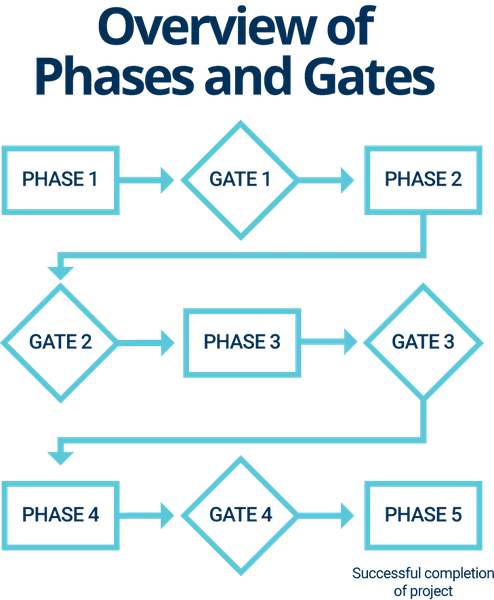
There are various names for project management gates, including:
- stage gates
- phase gates
- decision gates
- toll gates
- boundary gates
- gateway
- go / no-go
Why are gate reviews important?
Gate reviews confirm that current projects are still:
- Required by the business
- Aligned to organizational strategy
- Due to be completed within budget
- On track to deliver the forecasted benefits
Gate reviews also allow you to:
- Streamline planning. When you plan in stages, you only need to produce detailed plans for the next stage.
- Manage risks. You can identify and mitigate risks at any point and, if necessary, stop the project.
- Engage stakeholders. Open dialogue ensures you engage all stakeholders and reaffirm their commitment.
- Manage expectations. You can evaluate customer satisfaction and meet expectations at each gate.
- Increase confidence. Everyone becomes more confident that the project is going to be delivered successfully.
When should you hold a gate review?
The simple answer is that you should hold a gate review at the end of each stage or phase of a project.
Part of the project planning process is determining how many phases or stages the project requires. Once you know that, you can plan your gate reviews.
Typically, there are four stages in the project lifecycle:
- PHASE 1: Project Initiation
- PHASE 2: Project Planning
- PHASE 3: Project Execution
- PHASE 4: Project Close-out
(Sometimes, there may be an initial Idea or Concept phase, making it five in total.)
Who should conduct a gate review?
A gate review needs to be independent of the day-to-day running of the project, so the project manager should not run it.
Ideally, you want a steering committee of independent reviewers since they will conduct a more rigorous review.
A steering committee typically includes C-level executives and managers of departments involved in the project. But it can also have:
- Senior project and program professionals within your organization
- Executives or professionals from a different department
- Executives or professionals outside of your organization
The main criterion is that they have sufficient seniority, experience, and time to conduct an effective review.
How to conduct a gate review
Every organization will develop its own gate review process. However, a typical gate review includes the following steps:
- Setup. Adopt the terms of reference for the Review Team and agree on review dates with the Project Manager.
- Planning. The Review Team plans the gate review and introduces or updates members on the state of the project.
- Preparation. The Review Team reviews the evidence submitted by the Project Manager and prepares questions.
- Meeting. The Review Team discusses the evidence and questions the Project Manager and Project Sponsor. (And possibly other key project team members.) The Review Team confirms that:
- The project is running correctly.
- Resources are available for the next phase.
- The organization is ready to move forward with the project.
- Report. The Review Team prepares its findings and issues the report to the Project Sponsor and Project Manager. (There may be an opportunity to comment and revise a draft report.)
Following these steps, the Project Sponsor and Project Manager discuss the appropriate next steps. If everything goes well, the project will proceed to the next stage, as planned.
How to manage a gate review and all other aspects of your project with monday.com
The monday.com Work OS is a sleek, flexible platform that helps you track and manage all aspects of your project, including gate reviews and much more. With monday.com you can plan projects from start to finish and ensure everyone is on board.
Let’s break it down:
Use a ready-made project template
Bring deadlines, stakeholders, budgets, and more together in one place with our Single Project Template. Plan, manage, and track every project phase, so nothing slips between the cracks.
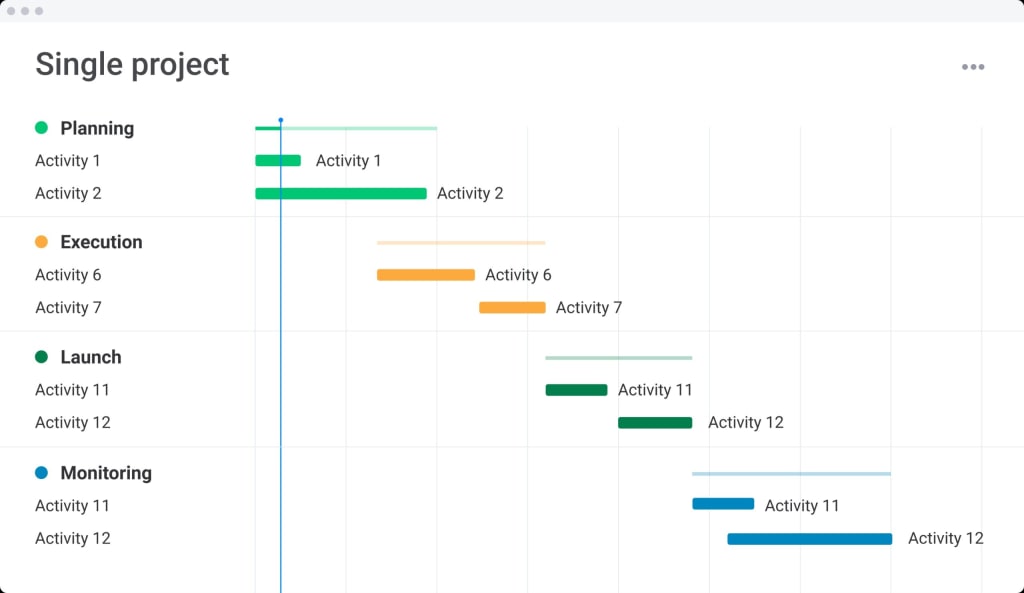
Customize your board with columns
Drag and drop 30+ column types – from due dates and timelines to status and people columns – to customize your project workflows. Create groups related to project stages to keep everything and everyone on track.
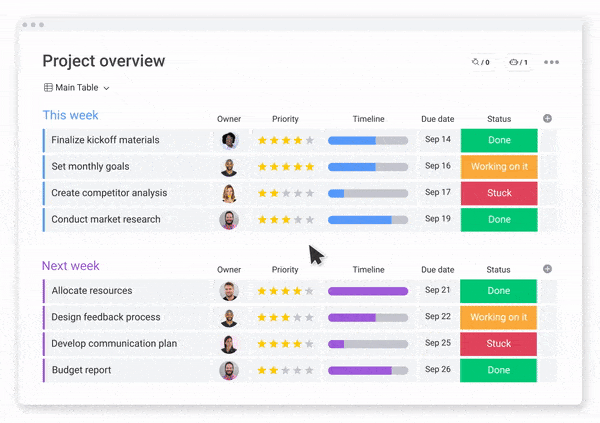
Visualize project progress
Visualize and understand the flow of all project phases with different views, such as Gantt, Kanban, charts, and timelines. Use colors to denote statuses – perfect for gate review meetings.
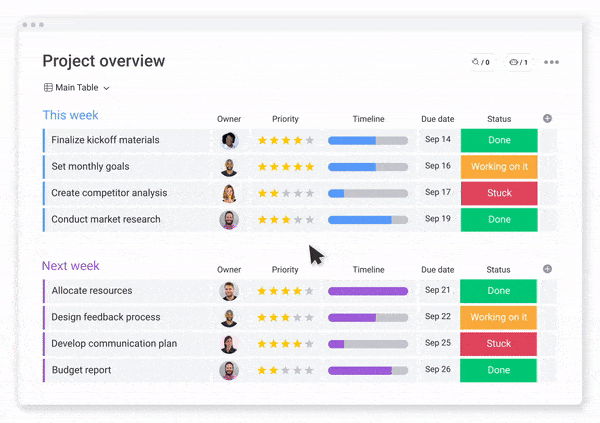
Automate routine tasks
Reduce time spent on manual tasks by automating routine workflows. For example, send emails when due dates arrive and receive real-time notifications when tasks are completed – focus on the work that matters.
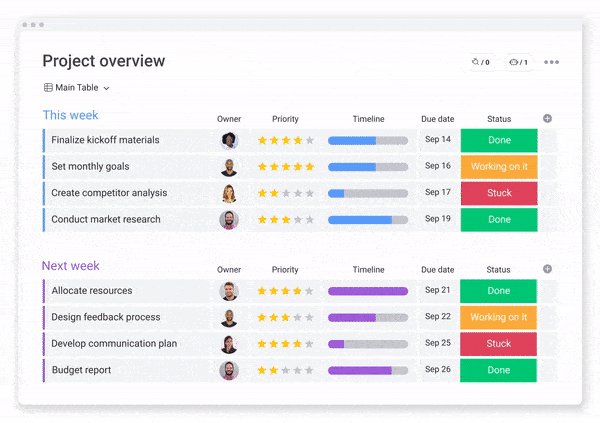
Choose from loads of automations or create your own with monday.com Work OS, like:
- When priority changes to high, move item to group high priority
- When status changes to done, create an update
- When due date arrives, notify item subscribers
Centralize project tasks in one place
Continue working with your existing tools on your project board with monday.com’s impressive array of integrations. For example, integrate:
- Gmail – Turn emails into action items to track and manage inside monday.com
- Dropbox – Attach, share, and preview stored files from within monday.com
- Jira – Convert Jira issues into manageable tasks within monday.com
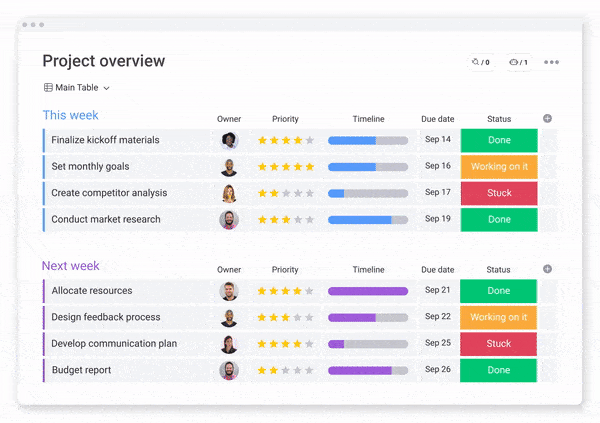
Frequently asked questions
Here are three frequently asked questions about gate reviews.
What are gates in project management?
Project management gates are decision points where an independent review team or the steering committee formally reviews the project’s current state and decides whether to continue.
What is a stage gate?
A project management stage gate divides large projects into stages with gates between them. It’s ideal for large projects involving multiple teams and stakeholders. The steering committee decides whether to proceed at each stage gate.
What is a phase gate?
A project management phase gate is a decision point at the end of each phase in a project. The traditional phase gate process has five phases with four gates. The phases are:
- Scoping
- Build business case
- Development
- Testing and validation
- Launch
A phase gate can lead to one of five possible results: go, kill, hold, recycle, or conditional go.
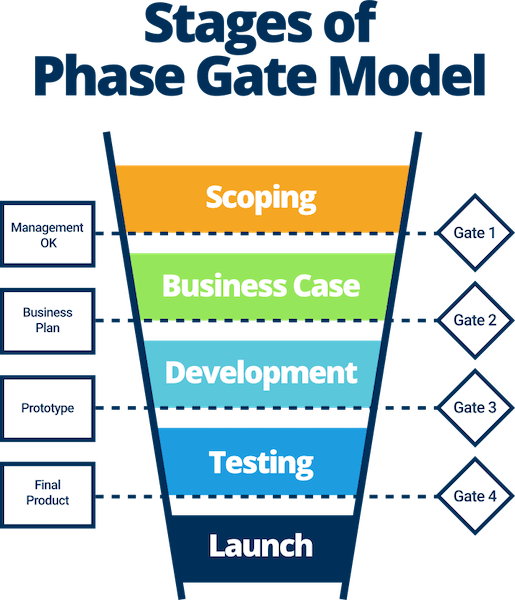
Manage your gate reviews with monday.com
A gate review is a checkpoint that governs whether a project can proceed to the next phase. It’s an integral part of the project management lifecycle overseen by an independent review team or steering committee and recorded in your project management software.
Try monday.com to see how easy it is to manage gate reviews at each stage of your projects.

